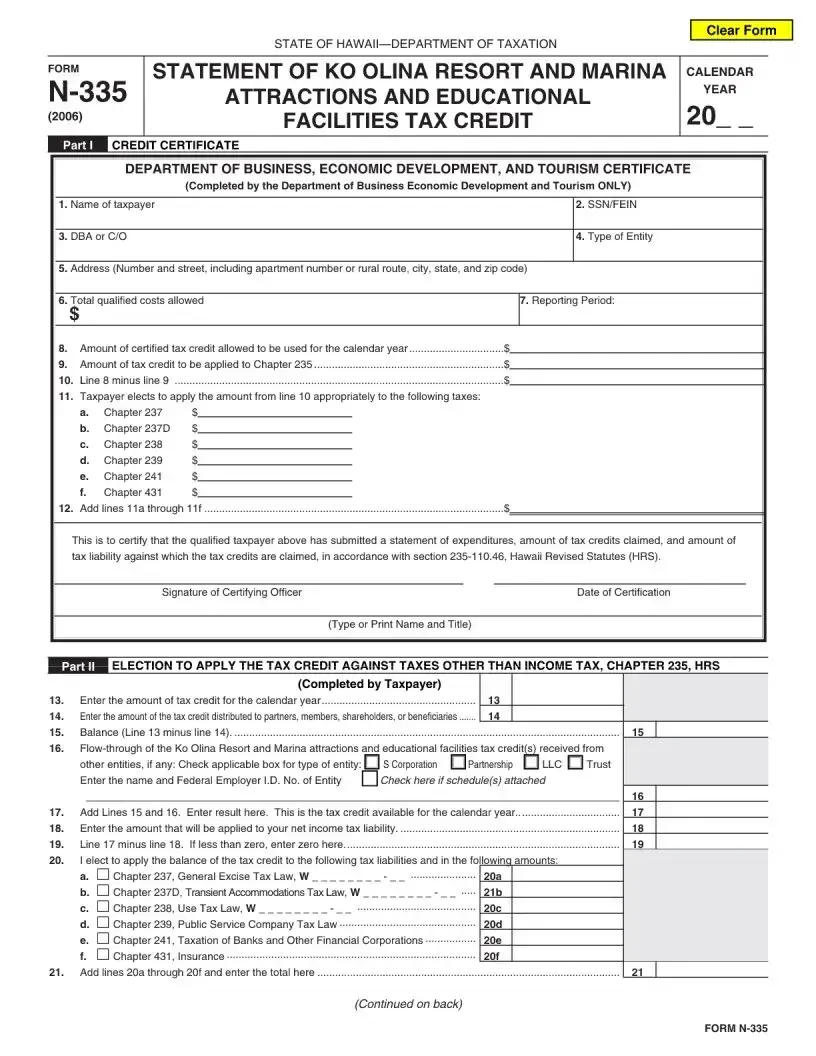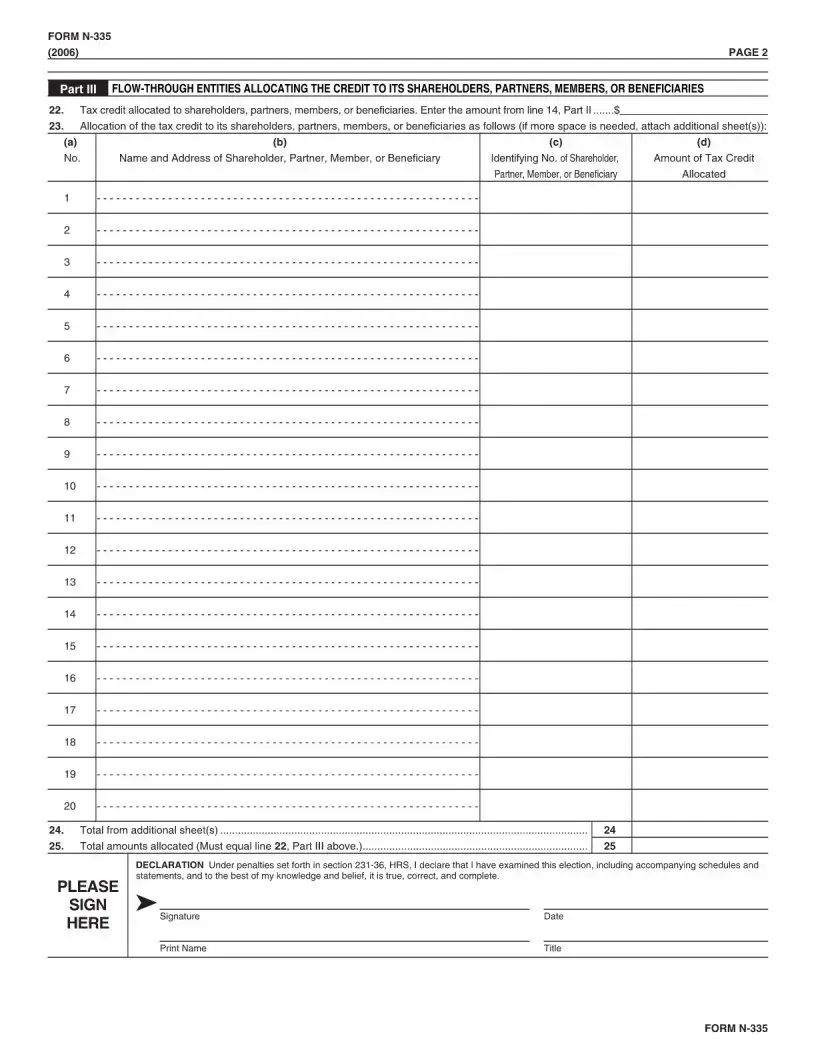Navigating the legal landscape of Hawaii can often feel like traversing through a lush, intricate maze, where each turn uncovers new regulations and procedures. At the heart of this legal jungle, for many, is the Hawaii N-335 form, a crucial document for those involved in specific taxable scenarios within the Aloha State. This form encompasses a broad range of activities, serving as a comprehensive tool for individuals and entities to report and compute their income accurately. Far from being just another piece of bureaucratic paperwork, the N-335 form embodies the state's commitment to maintaining a fair and balanced taxation system. It meticulously outlines the requisite information needed by the tax department to assess an entity's tax liabilities correctly. Understanding each section of this form is imperative for taxpayers seeking to comply with Hawaii's tax laws fully, ensuring they can navigate the complexities of the system with confidence and accuracy. With detailed instructions and specific fields tailored to different income types, the N-335 form plays a pivotal role in the financial operations of businesses and individuals alike, highlighting the significance of proper tax practices in sustaining the state's economic growth and development.

